Forehead reduction surgery prices start from $1000 in Iran. The cost of forehead reduction in Iran is usually much more affordable than any other European,North American countries and Turkey.
For example Forehead reduction surgery cost in Turkey is around $5000 and in USA and UK is around $9000.
If you decide to have a Forehead Reduction Surgery in Iran, reading this article can improve your knowledge about cost of Forehead Reduction Surgery in Iran to a great extent and help you to choose the best city and hospital to perform Forehead Reduction Surgery in Iran.
In this article we provide you with a comprehensive description of Forehead Reduction Surgery in Iran and the cost of Forehead Reduction Surgery in Iran.
Read more about : Facelift In Iran
The following table describes general information about Surgical Forehead Reduction in Iran including Forehead Reduction Surgery cost in Iran, recovery time, and to name but a few.
| General Information | |
| Cost | $ 1000 – 2200 |
| Anesthesia | General |
| Hospital Stay | 1 Day |
| Back to Work | 7 to 10 Days |
| Duration of Operation | 2-3 Hours |
| Minimum Stay in Iran | 7 Days |
How much does Forehead Reduction Surgery cost in Iran
On average, you can expect to pay something between $1000-1800 for forehead reduction surgery in Iran. However, there are different variables that will affect the final total cost:
. Where your plastic surgeon is located (those operating in larger cosmopolitan areas tend to charge more because of higher overhead costs).
. The reputation/experience of your surgeon
. The complexity of your particular case (more complex surgical cases, such as those where the forehead needs to be lowered a significant distance, or where the skin is very taut, take a longer time to complete).
. Whether or not a tissue expander (to stretch the skin) is required.
. The cost of anesthesia, nurses and operating facility fees.
. The type of method used
Forehead Reduction Cost in Iran,Tehran at 2023 is around $ 2000 which is done by specialist at the best hospitals.
Forehead Reduction Cost in Iran,Shiraz at 2023 is around $ 1400 and its being done by the best Medical Team
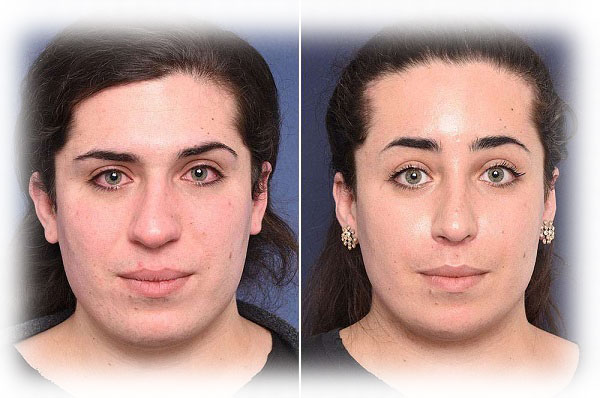
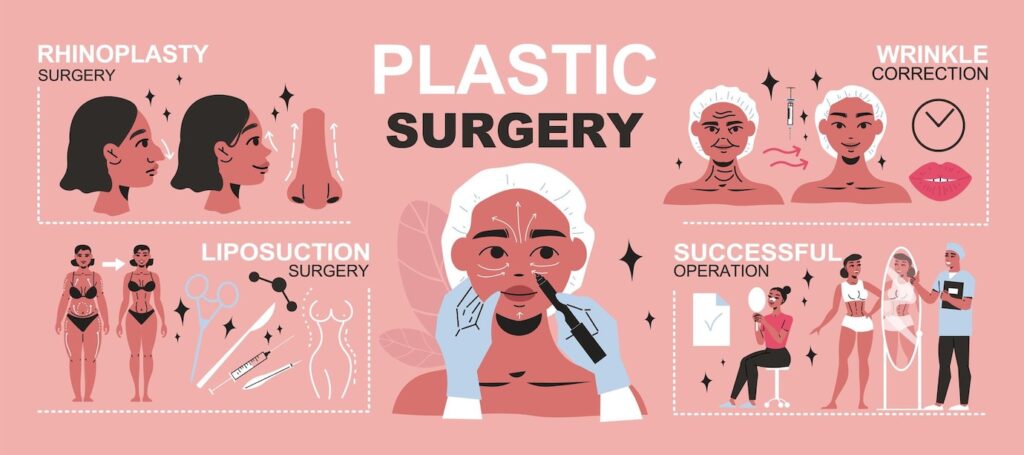

Arrival: We meet at the airport, take you to your hotel, and after some rest, the first appointment with your surgeon, X-ray or scans.
Arrival: We meet at the airport, take you to your hotel, and after some rest, the first appointment with your surgeon, X-ray or scans.


Aftercare and resting time, take your medication and do nose drops.
You have all day to yourself (you can go shopping, sightseeing walking, etc)


You have all day to yourself (you can go shopping, sightseeing walking, etc)
You have all day to yourself (you can go shopping, sightseeing walking, etc)


Second visit with the Doctor, removing the stitches and receiving instructions.
Departure

How can I find the best Forehead Reduction surgeon in Iran?
Forehead Reduction surgeons in Iran, have performed numerous procedures annually which make Forehead Reduction surgeons in Iran more experienced than other countries’ plastic surgeons, due to high demand and low costs of Forehead Reduction in Iran, thousands of people travel to Iran every year in a way that you can perform Forehead Reduction in Iran by the best Forehead Reduction surgeons with affordable and reasonable price.
Because of performing a great number of procedures, they become knowledgeable and highly skilled which make them very famous worldwide.
It is of paramount importance that your surgeon be expert in various types of Forehead Reduction surgery.
We are happy to introduce a great number of Iranian Plastic Surgeons who have all two above-mentioned features.
Iranian Surgery Team is happy to share its great Plastic Surgeons with you: ِ
Dr: Dastjerdi Plastic Surgeon Specialist Board-Certified Plastic Surgeon
Dr. Vahab Astarki Plastic Surgeon Specialist
Dr. Zahra Zarei Plastic Surgeon Specialist
Dr. Amali Plastic Surgery Specialist Since 2006
Dr. Fadaee Plastic and Maxillofacial Surgery Specialist
Dr. Mohammad Javid Cosmetic and Reconstructive Surgeon
Read more about : Best revision rhinoplasty surgeon in Tehran
Forehead reduction surgery, also referred to as hairline advancement surgery, hairline lowering surgery or foreheadplasty, reduces the size of an elongated forehead by removing a portion of the forehead skin and creating a lower hairline. The distance between the hairline and the eyebrows is effectively reduced. The extent to which the hairline may be advanced depends on variables such as hairline height, scalp laxity and the patient’s preferences.
Larger foreheads may be due to genetics, hair loss, or other cosmetic procedures. These options can help balance the proportions of your face and it’s different from a brow lift procedure.
Typically, the female hairline should begin between 4 and 6cm above the eyebrows, at the transition point between the vertical forehead and where the forehead slopes backwards towards the scalp. Forehead reduction surgery can help patients by bringing the hairline to a more pleasing position, thereby restoring facial harmony.
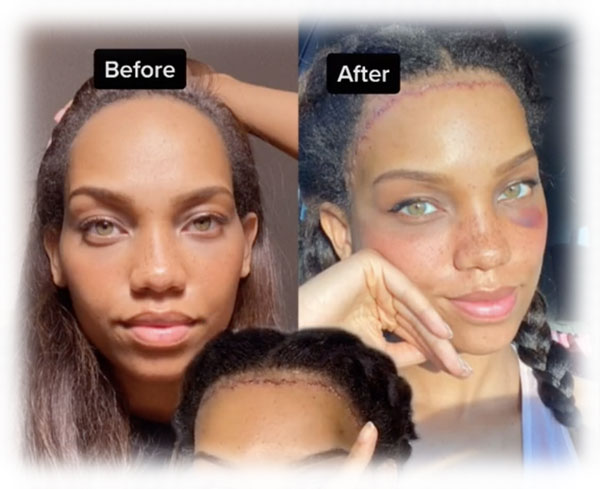
Being in the best possible state of physical and mental health prior to surgery is one of the most effective ways to ensure the best possible outcome.
Here are some tips to help you prepare for surgery:
. Disclose your complete medical history to your surgeon. It is particularly important you let your surgeon know if you suffer from an eye-related condition like glaucoma, dry eye or detached retina. Other medical conditions such as high blood pressure, a history of keloid scars or circulatory disorders should also be shared with your surgeon.
. Inform your surgeon of any previous plastic surgery you have had performed: for example, if you have had a coronal brow lift this will render you unsuitable for forehead reduction surgery.
Let your surgeon know all of the medications you are taking. You will be instructed to cease taking aspirin and anti-inflammatory medication such as Advil several weeks prior to surgery to minimize bleeding and bruising.
Your surgeon will also provide you with a list of over-the-counter medications or health supplements to avoid. Some natural medications and vitamins may exacerbate bleeding.
Avoid alcohol and salty foods for the week leading up to surgery to decrease fluid retention and swelling.
Stop smoking at least one month prior to surgery. Smoking can have a detrimental impact on your healing from surgery and in some cases, even cause tissue death (necrosis).
Get into an optimal state of health before surgery: eat nourishing and wholesome food, rest, exercise, drink plenty of water. A healthy mind and body will help guarantee a quick recovery and expedite healing.
By carefully adhering to your surgeon’s preoperative guidelines before your forehead reduction procedure, you can do your part to guarantee the best possible results from surgery.
Read more about : Rhinoplasty in Iran
. Shortens the distance between the eyebrows and hairline, restoring proportion and balance to the face.
. Can be performed in conjunction with a brow lift, which smooths most forehead wrinkles.
. Overall improved appearance
. A more youthful appearance
. Reduction of temporal hair loss
. The alleviation of wrinkles in the upper forehead
. Alteration of the hairline (for example, surgery can eliminate or create a widow’s peak).
Individuals who are unhappy with the size of their forehead are ideal candidates for this procedure. Generally, women are likely to enjoy better results as they do not suffer from hairline recession to the same extent as men.
However, men can still benefit from surgery but first require a thorough assessment to determine their suitability. Men who undergo forehead reduction surgery need to be cognizant of the progressive nature of hair loss in males, and realize that further procedures such as hair transplants may be necessary to maintain optimal results.
For men who are undergoing facial feminization surgery (FFS), the forehead reduction procedure is key to achieving a more feminized facial appearance.
Read more about : Who is a good candidate for liposuction?
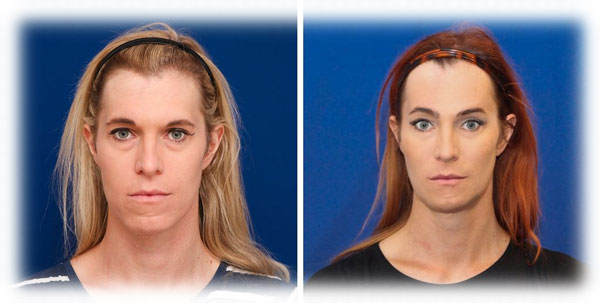
. A high hairline and a large forehead
. Individuals with low or heavy brows, as in some cases forehead reduction surgery can help elevate the brows to a more attractive position.
. Individuals with supple forehead skin and scalp that has a certain degree of laxity.
. Individuals in a sound state of mental and physical health
. Individuals with realistic expectations about what surgery can achieve
. Men with thick hair density and no family history of hair loss
. Men who have a new hairline created by hair grafting
Read more about : Blepharoplasty in Iran
Similar to any surgical procedure, forehead reduction surgery carries risks. Honest communication with your surgeon about your medical history or any factors that may complicate your surgery or recovery can help to mitigate risks and maximize your results.
Be sure to also follow your surgeon’s advice as closely as possible before and after surgery: he or she will provide guidelines that will help you to safely prepare for the procedure and recover quickly afterwards.
However, some of the complications that can arise as a result of foreheadplasty include:
. Infection as a result of poor wound healing
. Bleeding
. Numbness at the incision site and in the front of the scalp until the nerves regrow; a small number of patients could possibly experience permanent numbness.
. Fluid accumulation at the wound site (seroma)
. Facial asymmetry (this usually corrects itself as healing progresses)
. Visible scarring (in the rare instances that this does occur, hair grafts can conceal scars).
. Individuals with darker skin tones may be left with a lighter, white scar that’s not so easily concealed.
. Bruising which may extend down to the eyes (bruising usually subsides within a couple of days).
. Hair loss around the scar: this may be temporary or permanent.
. Loss of mobility and expression in the forehead area (the effects are similar to Botox). This loss of mobility should be temporary, but in some cases can be permanent.
. Revision or secondary surgery may be necessary.
Forehead reduction surgery generally takes 2-3 hours and proceeds according to the following steps:
This skin removal method can lower the hairline by up to 5cm. In cases where the hairline has to be lowered by more than 6cm (a more invasive and complex procedure), a temporary tissue expander is used beneath the scalp.
A tissue expander is a balloon-like device, inflated with salt water that helps to stretch the skin and grow new cells prior to surgery. After 4-8 weeks, the skin of the scalp increases due to the skin growth and stretching, and the expander is removed. In some cases, your surgeon will recommend that a small amount of hair grafting be performed at a later time to thicken the hairline and optimize results.
Read more about : Cheek Implants Surgery In Iran
Following your forehead reduction, patients will experience considerable swelling and bruising. Bandages will be used to keep the incision site clean and eliminate post-op swelling. Your surgeon will prescribe certain procedures to assist with any swelling or further complications in the healing process.
In 3-4 days patients may be able to resume driving and engage in light work and daily activities. Patients should keep their head elevated at a 45-degree angle to reduce swelling.
Forehead reduction surgery doesn’t usually require a significant recovery period. Most patients feel well enough to return to work after several days of rest. There may, however, be some swelling and bruising that lingers for a few weeks around the forehead, head or even eye area.
Moderate pain / discomfort is expected for 3 – 5 days. Patients can go back to their normal daily activities after maximum 1 week, but avoid strenuous exercise / activity for 6 weeks including any contact sports.
Read more about : Hair Transplant In Iran
During your consultation, ask your surgeon to show you pictures of patients at various stages of post-operative healing so you can gain an idea of what you will look like and what to expect.
. Following surgery, your head will be wrapped in bandages to minimize pain and swelling. Leave the bandages on until your surgeon agrees they can be removed. Dressings must remain on the incision site until the stitches are no longer necessary.
. Ice compresses will help to relieve any pain and swelling. Prescribed pain medication will also help if you experience prolonged discomfort. You should report any severe pain to your surgeon.
. Some surgeons may prescribe antibiotics to reduce the likelihood of infection occurring.
. Keep your head in an elevated position when you sleep for the first few days after surgery.
. It is normal to experience some numbness in the front of the scalp behind the incision. This numbness could last a few days or endure for several months while the nerves grow back.
. Itchiness may occur around the incision line as the nerve endings grow back. This is a good sign that the scalp is healing.
. The sutures will be removed after one week if they are not of the dissolvable variety.
. You can wash your hair two days after surgery.
. Some hair loss at the front of the scalp may occur 2-4 weeks after surgery. Following a ‘resting period’ of several months, the hair will grow back in.
. Avoid strenuous exercise such as swimming, lifting heavy objects, going to the gym or running for at least two weeks, or until your surgeon advises you that you can resume such activities.
. Swelling may remain for several weeks or months after surgery. People heal at different rates, but rest assured, all swelling will gradually subside.
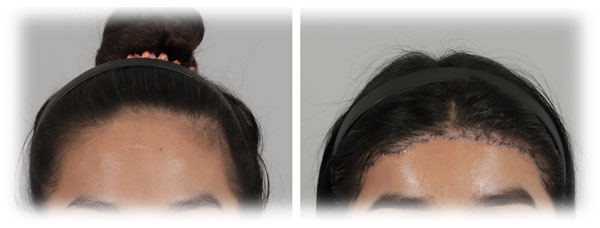
Fortunately, there is a relatively quick recovery time after surgery, meaning you will not need to wait long to enjoy your results. Any bruising or swelling will usually resolve quickly, and a few days following the procedure most patients can hide the fact they have had surgery and return to everyday life, enjoying their new look.
However, having realistic expectations of what you will look like after surgery is essential to enjoying the postoperative outcome. Remember, the change will appear more as a subtle improvement than a dramatic transformation. Ask your surgeon for advice about the best way to maintain and prolong your results.


